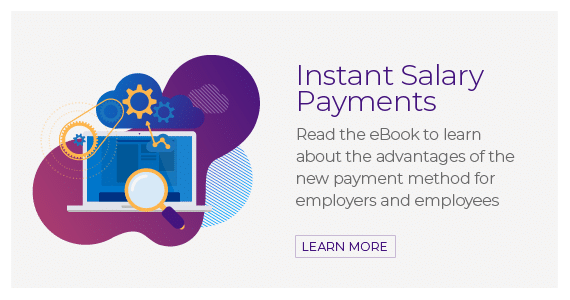Now more than ever, employee experience has a huge impact on the success, productivity and smooth running of any business. When people are enjoying the experience they get at work, they feel happier in their lives outside work, more motivated to work harder, and feel loyalty and emotional engagement with their employer. According to Instride, employees getting positive experiences are 16 times more engaged, and eight times more likely to want to stick with their current employer, a vital outcome in the wake of the Great Resignation.
However, what constitutes a good employee experience has changed substantially in the last few years, and it continues to change all the time. In a climate where people are more readily switching jobs like ever before, it’s vital that businesses put an employee experience strategy in place that gives their workforce the feel-good factor.
This blog explores why employee experience matters and how HR leaders can go about improving the employee experience in 2023.
What makes up a good employee experience?
Every single touchpoint that an employee has with their work, colleagues and employer has an influence on their employee experience. It starts before they even take up their role, with how friendly and professional their interview and application process was, through to how smooth and supportive the onboarding process was.
Beyond this, it carries on through their everyday duties, including all the little things that can make a surprisingly big difference to employee engagement and satisfaction. For example, an employee might be trying to get onto an important video call and their aging computer suddenly crashes. Alternatively, an error made by payroll means that their paycheck is a couple of days late in arriving into their bank account. From an employer’s perspective, these may sound like very minor issues, but they can have a huge impact on employees’ stress levels, productivity, life outside of work, and how valued they feel by their employer.
Making improvements with an employee experience strategy
It wasn’t so long ago that any dissatisfaction among employees could be solved with a hearty pay rise. But times have changed: employees now expect businesses to support their career development, give them flexibility in their work/life balance to combat burnout, and express values of diversity, equity and inclusion. As a result, developing an all-encompassing employee experience strategy is vitally important. So, what can a company do to enhance employee experience?
-
Digitizing the workplace: technology is a vital part of modern business, and so it’s a vital part of great employee experience, too. Instead of thinking of tech as a way to make business easier, it should also be looked at as a way to improve employee touchpoints and interactions. A great example of this is Earned Wage Access, where employees can accrue wages day-by-day, then use an online platform to withdraw however much of their wages they need, wherever and whenever they need it.
-
Personalization: employees need support on a number of fronts, from technical support for hardware and software, to emotional support to help maintain their mental well-being. Given the detached and often isolated nature of remote work, this is especially important in the current hybrid work climate. And as every employee is different, their needs and priorities will differ, which is why providing access to personalized support services is so important, starting with customized action plans where needed.
-
Workplace design: the differences in employee preferences have a major impact on what they want from their work environment. Some people like a lively, collaborative environment, while others prefer peace and quiet to focus on their work. At the same time, some choose to work from the office because they don’t have the right conditions to be productive at home. Building flexibility into the workplace with different zones and shared bookable workspaces is the best way to ensure everyone gets the office experience they want.
-
Motivating with more than money: younger employees in particular tend to be motivated by perks other than their earnings, prioritizing career development opportunities, and positive company culture (more on that below). As a result, they’re looking for employers to give them the opportunity to grow as people, and to easily engage with chances to learn new skills. This focus on the employee journey can make a big difference to talent retention: Instride has found that 94% of employees are more likely to stay with an employer that invests in their skills.
-
Building a positive culture: employees increasingly want to work for a company that shares their values in life. That normally means building a culture of trust through all levels of the workforce, and one where a diverse, inclusive body of employees all have the chance to grow and succeed. If employees don’t feel that this is the case, then they won’t be shy about telling their employers about it. Engaging with staff proactively to identify any cultural issues that need resolving is therefore a vital part of making employees feel connected to the business.
In summary
There is a common theme that runs through all of the above points: finding out what employees want from their work life, and making changes through an employee experience strategy to deliver on those expectations. Even at a time of great change in the world of work, putting employees at the core of a business is the best way to make them feel valued and motivated, so that they maximize their productivity and have a hand in shaping their own future of work.
A globalized, centralized solution for payroll, treasury and on-demand pay can play a key role in creating a positive employee experience. Learn how you can achieve this through The CloudPay Impact here.



